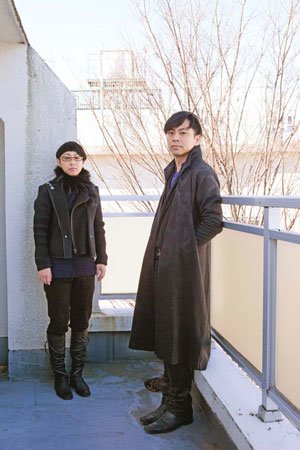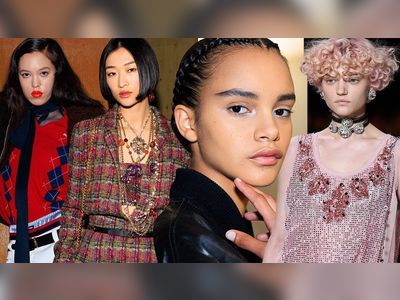“For me, it was an inner revelation,” Horihata says,
“because when I walked in the street, I felt like a foreigner in
Japan. Nobody wears kimonos now.” He adds that when he puts one
on, his stance shifts slightly, and his behavior changes, too.
“Makiko and I, we began talking about the essence of the kimono
and thinking deeply about the Japanese sensibility.”
They translated those musings into a collection, Matohu (pronounced MA-TO-U). Since launching it in 2005, Horihata and Sekiguchi have subtly mined the motifs of traditional Japanese culture, recasting them as gracefully molded coats, delicate textured tops and wrap dresses (think Memoirs of a Geisha, not Diane von Furstenberg). The spring lineup, for instance, takes inspiration from the country’s centuries-old Oribe style of pottery. “Playful,” says Horihata, is a key word for the season’s fragile yet upbeat fashions: crinkled, paper-thin jackets and skirts splashed with colorful prints.











